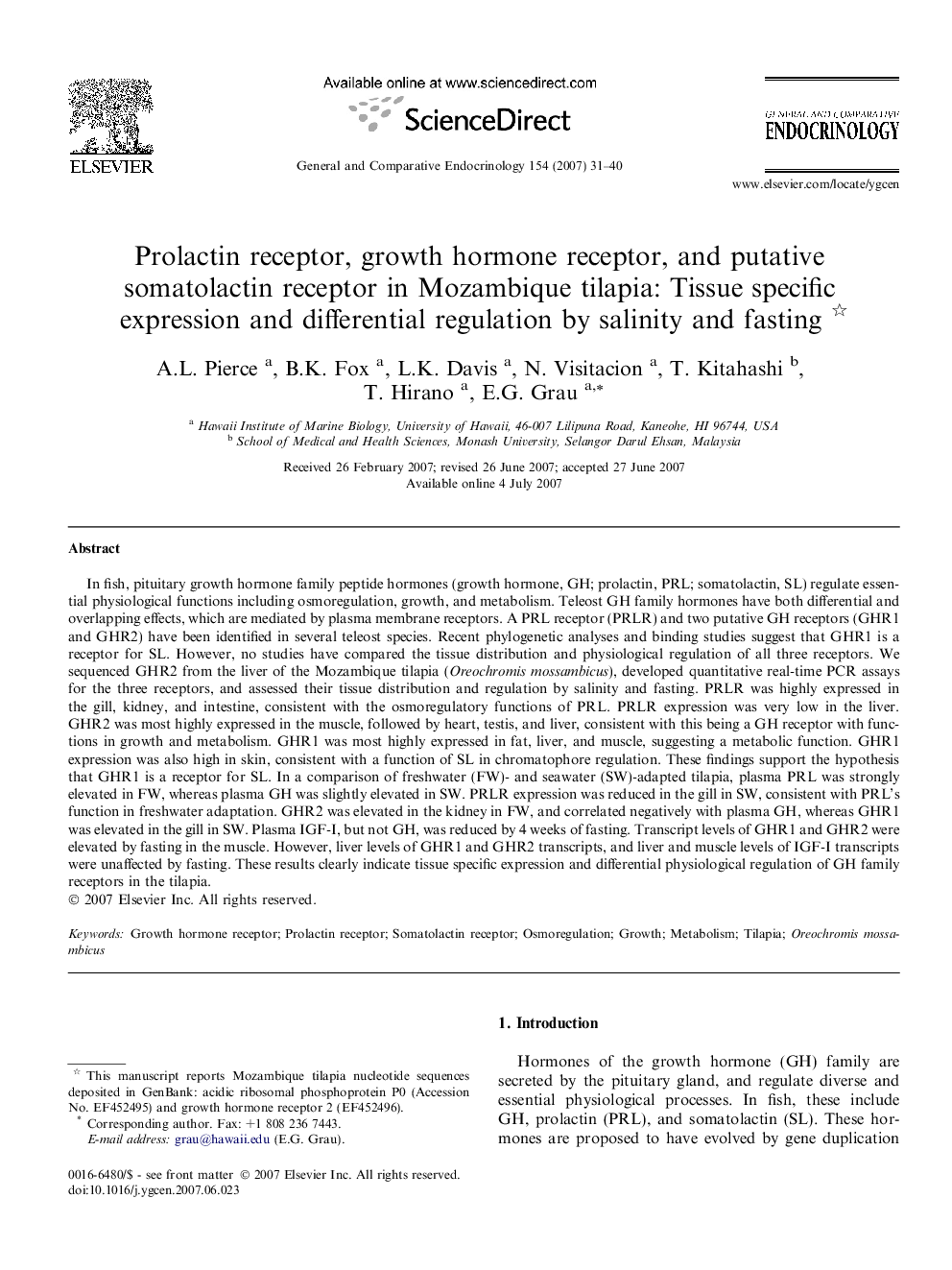| کد مقاله | کد نشریه | سال انتشار | مقاله انگلیسی | نسخه تمام متن |
|---|---|---|---|---|
| 2801668 | 1568931 | 2007 | 10 صفحه PDF | دانلود رایگان |

In fish, pituitary growth hormone family peptide hormones (growth hormone, GH; prolactin, PRL; somatolactin, SL) regulate essential physiological functions including osmoregulation, growth, and metabolism. Teleost GH family hormones have both differential and overlapping effects, which are mediated by plasma membrane receptors. A PRL receptor (PRLR) and two putative GH receptors (GHR1 and GHR2) have been identified in several teleost species. Recent phylogenetic analyses and binding studies suggest that GHR1 is a receptor for SL. However, no studies have compared the tissue distribution and physiological regulation of all three receptors. We sequenced GHR2 from the liver of the Mozambique tilapia (Oreochromis mossambicus), developed quantitative real-time PCR assays for the three receptors, and assessed their tissue distribution and regulation by salinity and fasting. PRLR was highly expressed in the gill, kidney, and intestine, consistent with the osmoregulatory functions of PRL. PRLR expression was very low in the liver. GHR2 was most highly expressed in the muscle, followed by heart, testis, and liver, consistent with this being a GH receptor with functions in growth and metabolism. GHR1 was most highly expressed in fat, liver, and muscle, suggesting a metabolic function. GHR1 expression was also high in skin, consistent with a function of SL in chromatophore regulation. These findings support the hypothesis that GHR1 is a receptor for SL. In a comparison of freshwater (FW)- and seawater (SW)-adapted tilapia, plasma PRL was strongly elevated in FW, whereas plasma GH was slightly elevated in SW. PRLR expression was reduced in the gill in SW, consistent with PRL’s function in freshwater adaptation. GHR2 was elevated in the kidney in FW, and correlated negatively with plasma GH, whereas GHR1 was elevated in the gill in SW. Plasma IGF-I, but not GH, was reduced by 4 weeks of fasting. Transcript levels of GHR1 and GHR2 were elevated by fasting in the muscle. However, liver levels of GHR1 and GHR2 transcripts, and liver and muscle levels of IGF-I transcripts were unaffected by fasting. These results clearly indicate tissue specific expression and differential physiological regulation of GH family receptors in the tilapia.
Journal: General and Comparative Endocrinology - Volume 154, Issues 1–3, October–December 2007, Pages 31–40